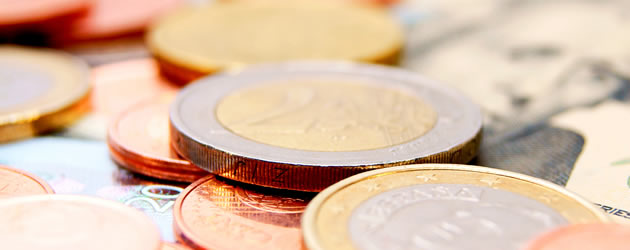
The Pound to Euro exchange rate (GBP/EUR) climbed by 0.85 cents to 1.1885 yesterday afternoon during Mario Draghi’s post-rate decision press conference. The European Central Bank opted to reduce the benchmark interest rate by 25 basis points to a fresh record low of 0.50%. However, the rate cut was largely anticipated by markets and did not negatively impact the single currency. The Euro fell against both Sterling and the US Dollar as Draghi said that the ECB is “open” to negative deposit rates. The Euro to US Dollar exchange rate (EUR/USD) shrunk by -1.2 cents to 1.3070.
Draghi’s press conference went by largely as planned to begin with: the ECB Chief mentioned that inflation expectations remain firmly “anchored” and “broadly balanced”; he said that “downside risks” continue to weigh over the Eurozone; and pledged to support the currency bloc for “as long as needed”. The Euro held steady against both the Pound and the Dollar up until the mention of negative deposit rates. Michael Hewson of CMC Markets said:
“The admission that the Governing Council was keeping an open mind on negative deposit rates, in spite of risks, was not expected…and precipitated a sharp sell-off in the Euro currency”.
By charging banks to leave funds in the safety of the European Central Bank, negative deposit rates are designed to persuade commercial banks to lend to the real economy. The idea is that cash flows will increase within the Eurozone leading to more investment and enhanced economic growth. However, in reality there is little to suggest that this scheme will have the desired effect. In Denmark, for example, the use of negative deposit rates led to an increase in lending costs, as banks raised interest rates in order to compensate for the charges they incurred holding their funds at the Central Bank.
The problem is that banks across Europe already have dangerous amounts of bad debts on their books; further risks are just not viable at this juncture. The balance between risk and return will not be swayed by Central Bank charges. In other words: if companies or individuals are not deemed creditworthy to begin with, the threat of negative deposit rates will not miraculously turn them into sound investments in the eyes of crisis-hit commercial banks.
Mario Draghi also stated that Eurozone member states need to stick to the path of fiscal consolidation, despite the obvious hardships, in order to achieve sustained economic growth:
“In order to bring debt rations back on a downward path, Euro area countries should not unravel their efforts to reduce government budget deficits and continue where needed, to take legislative action or otherwise promptly implement structural reforms, in such a way as to mutually reinforce fiscal sustainability and economic growth potential”.
The comments can be read as a warning to France and Italy, whose respective governments have expressed concern towards the effectiveness of continent-wide austerity over the last few weeks.
In terms of economic data releases, the Eurozone Manufacturing PMI rose slightly to 46.7, the British Construction Industry edged closer to positive growth at 49.4, and the US Initial Jobless Claims figure sunk to a 5-year low of 324,000.
This afternoon’s US Non-farm Payroll print for April is the next major event on the economic docket. A strong figure will reduce QE3 improvement prospects and therefore boost the US Dollar across the board. However, a weak score, similar to March’s dreadful 88,000, will likely lead to accentuated gains in GBP/USD and EUR/USD in light of the Federal Reserve’s comments this week that it is willing to “increase” the pace of QE3 in relation to up-and-coming economic indicators.

Comments are closed.